Far and away my favorite subject to photograph for relaxation and practice is the Landscape venue. Having grown up in the Blue Ridge mountain region of Southwest Virginia, learning to make better landscape photographs has been a staple in my own learning curve over the years and an ever-present means of practice to this day in terms of shooting and processing.
The normal approach
In days gone by, when presented with a scenic landscape of any kind, being overwhelmed with the newness of the sight itself, I would likely frame the best overall shot I could get with the 35, 50 or 28-80mm lens I may have had attached at the time. I was totally unaware of my position — forget about a strong foreground — and with absolutely no sense of framing. There is no telling how many rolls of boring, flat shots are stored away in those boxes.
As it turns out, it’s all about the approach: go as wide as possible and get as close as possible (as safely as possible) without disturbing the local ecosystem. The process is simple and becomes so second nature that, quite frankly it’s become next-to-impossible not to shoot this way. Let’s jump in and explore a few proven tips to adding interest to nearly any landscape scene, starting with the lens we’ll need.
Step one, go wide
One of the primary keys to interesting landscape composition is to go with a wide lens. I would not necessarily recommend a fish-eye lens (unless that’s what you’re going for) but rather something in the 10-35mm range — such as the Canon 16-35mm f/2.8 wide-angle zoom for Canon full-framers, or the Sigma 10-20mm f/3.5 for crop shooters, for example, to get started.
.mgl-tiles { display: none; } #mgl-gallery-634eb4a9692ac { margin: -5px; width: calc(100% + 10px); } #mgl-gallery-634eb4a9692ac .mgl-box { padding: 5px; } @media screen and (max-width: 768px) { #mgl-gallery-634eb4a9692ac { margin: -5px; width: calc(100% + 10px); } #mgl-gallery-634eb4a9692ac .mgl-box { padding: 5px; } } @media screen and (max-width: 460px) { #mgl-gallery-634eb4a9692ac { margin: -5px; width: calc(100% + 10px); } #mgl-gallery-634eb4a9692ac .mgl-box { padding: 5px; } }
Canon 600D + Sigma 10-20mm f/3.5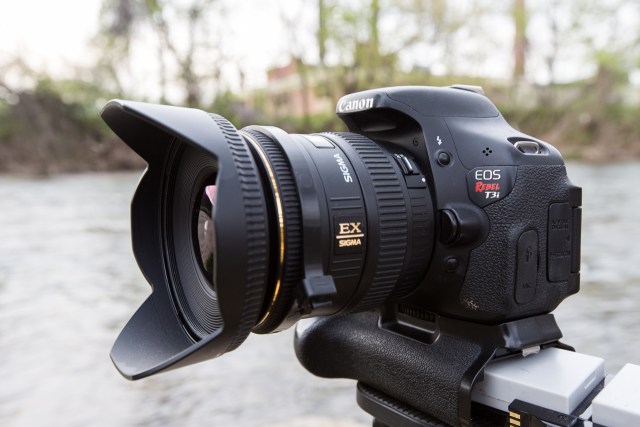
Canon 5D3 + 16-35mm f/2.8L (via Lensrentals.com full-frame landscape package)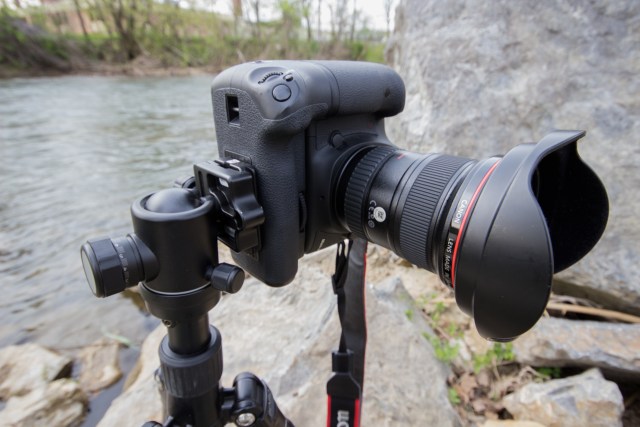
Note: If you don’t have a wide-angle lens on hand, the folks at Lensrentals.com have landscape packages available for both full-frame and crop-sensor bodies across all manufacturers. Canon full-framers, I would point you in the direction of the Full-frame Landscape package, which includes the Canon 16-35mm f/2.8L wide-angle zoom along with a circular polarizing filter and a quality mid-weight tripod. Nikon shooters, have you covered as well? Highly recommended.
While not a hard and fast rule, almost every appealing landscape image typically has three points in common: a strong foreground, a strong midrange and a strong background (preferably). The wider the field of view, the more elements are available to draw the eye, establish the illusion of depth and make the viewer feel present in the scene.
As opposed to telephoto lenses, the majority of wide-angle lenses are inherently lacking in depth and prone to varying degrees of distortion at the edge of the frame, depending on the lens’ build quality. These traits can be ideal for emphasizing movement in skies and water as well as allowing for a much closer subject-focusing distance.
.mgl-tiles { display: none; } #mgl-gallery-634eb4a969b83 { margin: -5px; width: calc(100% + 10px); } #mgl-gallery-634eb4a969b83 .mgl-box { padding: 5px; } @media screen and (max-width: 768px) { #mgl-gallery-634eb4a969b83 { margin: -5px; width: calc(100% + 10px); } #mgl-gallery-634eb4a969b83 .mgl-box { padding: 5px; } } @media screen and (max-width: 460px) { #mgl-gallery-634eb4a969b83 { margin: -5px; width: calc(100% + 10px); } #mgl-gallery-634eb4a969b83 .mgl-box { padding: 5px; } }
Small Scene Sample in Close Quarters – Leica 18mm f/3.8 Super Elmar M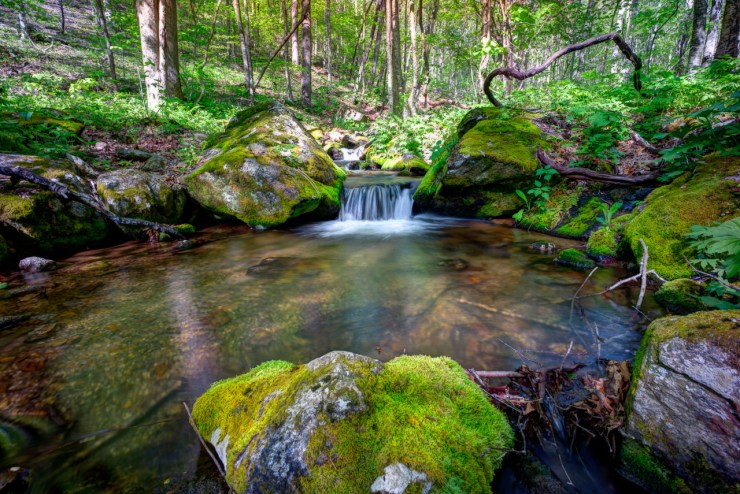
Though capable of reaching out to contain an entire vista, because we can get closer, a wide lens can be equally useful in flattering smaller scenes and objects, as well as easy to maneuver on-camera when working in tighter spaces.
Wide-angle lens distortion is far more easily contained in post these days, making it safer to rack out a bit more than normal (if need be) for a wider view and adjust later by way of the Lens Corrections panel in Lightroom or Adobe Camera Raw. When shooting landscapes, going wide always goes hand-in-hand with the next step in terms of adding interest to a given image. And that would be.
Get low
As mentioned above, all great landscape images (generally speaking) have three things in common: a strong foreground, midrange and background. While an eye-level view can certainly get the job done now and then, the majority of the action in a landscape scene is almost always occurring either high or low — and that’s where we need to draw attention.
While framing an overall scene might be the initial goal, a ton of interest can be added by repositioning to incorporate any smaller ground and cloud-level detail, as well as any leading lines that may be present (or created). More often than not, simply taking a lower position and perspective will yield a far more appealing result, even with the most mediocre of subjects.
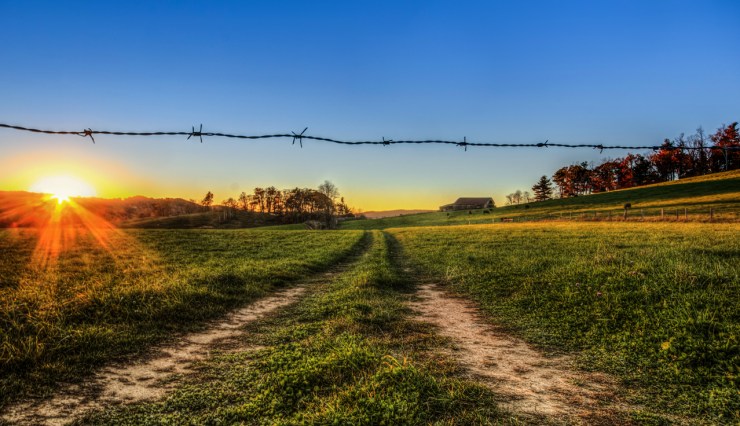
For example, when presented with an appealing golden-hour sky and limited foreground access, the texture of the ground alone can often add interest and serve as a lower-third anchor for a shot. In the above example, it happened to be a dirt road, but this can be any texture, object or line present that might be useful in drawing the viewer’s eye into the scene.
A safely-isolated road can be a great place to practice, in fact, whether a straight neighborhood avenue, a lead-in to a curvy mountain road or a simple cart path.
.mgl-tiles { display: none; } #mgl-gallery-634eb4a969fb1 { margin: -5px; width: calc(100% + 10px); } #mgl-gallery-634eb4a969fb1 .mgl-box { padding: 5px; } @media screen and (max-width: 768px) { #mgl-gallery-634eb4a969fb1 { margin: -5px; width: calc(100% + 10px); } #mgl-gallery-634eb4a969fb1 .mgl-box { padding: 5px; } } @media screen and (max-width: 460px) { #mgl-gallery-634eb4a969fb1 { margin: -5px; width: calc(100% + 10px); } #mgl-gallery-634eb4a969fb1 .mgl-box { padding: 5px; } }
Mountain Road Sample – Sigma EX 10-20mm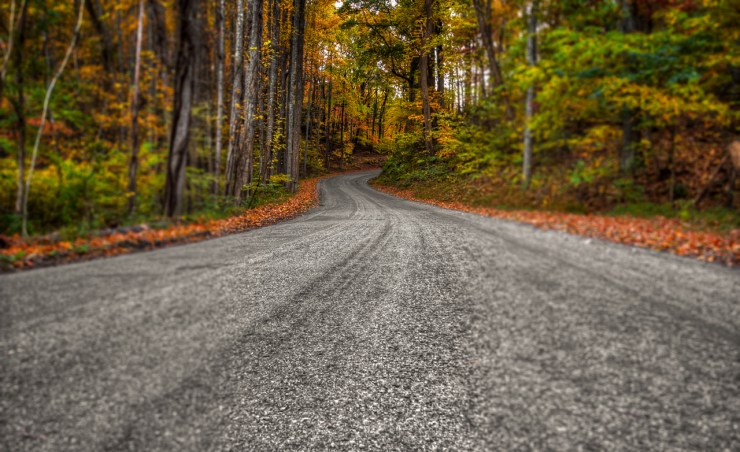
Cart Path Sample – Leica 18mm Super Elmar M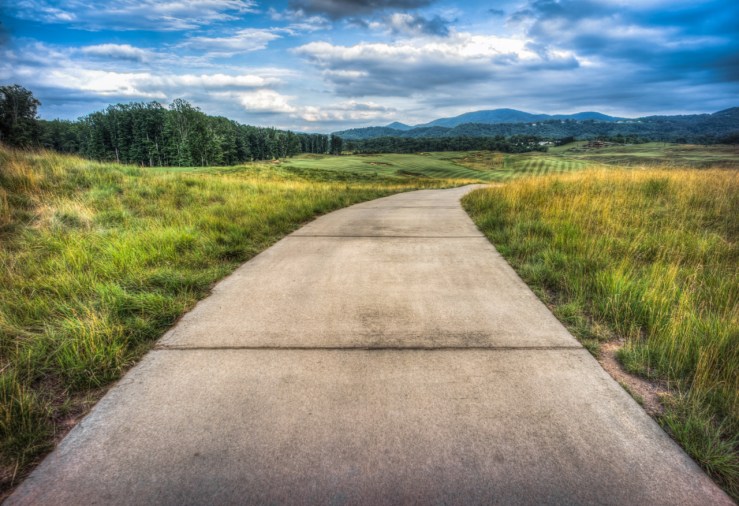
Street View Sample – Leica 18mm Super Elmar M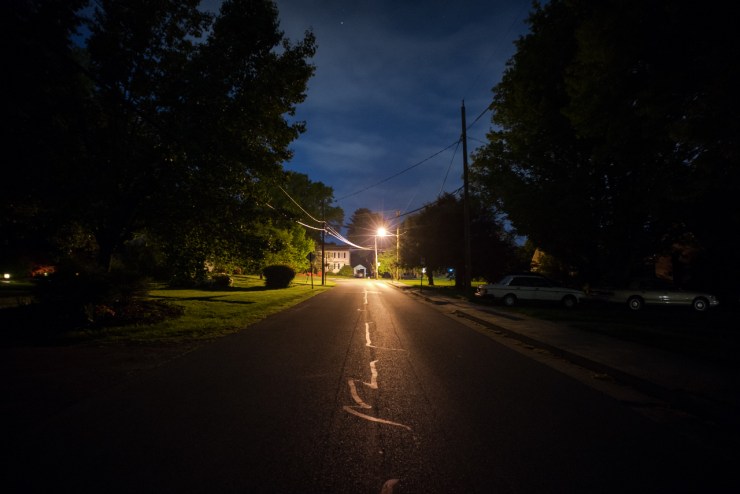
Start by positioning the tripod in the center of the scene, then get low and start working the corners. That is, level the frame and make the edges of the roadway enter the lower corners of the frame as evenly as possible. My preference is to locate an appealing angle on a scene, then play around with varying heights at the tripod level from there.
Again, try at all costs to give viewers the feeling they’re standing there with you. This technique is particularly effective when shooting an aquatic landscape, which brings us to a final point.
When possible: Get in
Like roads, small creeks and tributaries are some of the best and safest places to practice making aquatic landscapes. But catching a good image here is kind of like catching a fish — an utterly futile task from the water’s edge.
Only when we can forage somewhat safely out onto the rocks and shallow waters do we find our scenes truly come to life. Think water flowing off the page and into the viewer’s lap, or around their own feet.
.mgl-tiles { display: none; } #mgl-gallery-634eb4a96a98f { margin: -5px; width: calc(100% + 10px); } #mgl-gallery-634eb4a96a98f .mgl-box { padding: 5px; } @media screen and (max-width: 768px) { #mgl-gallery-634eb4a96a98f { margin: -5px; width: calc(100% + 10px); } #mgl-gallery-634eb4a96a98f .mgl-box { padding: 5px; } } @media screen and (max-width: 460px) { #mgl-gallery-634eb4a96a98f { margin: -5px; width: calc(100% + 10px); } #mgl-gallery-634eb4a96a98f .mgl-box { padding: 5px; } }
Water Sample – Sigma EX 10-20mm f/3.5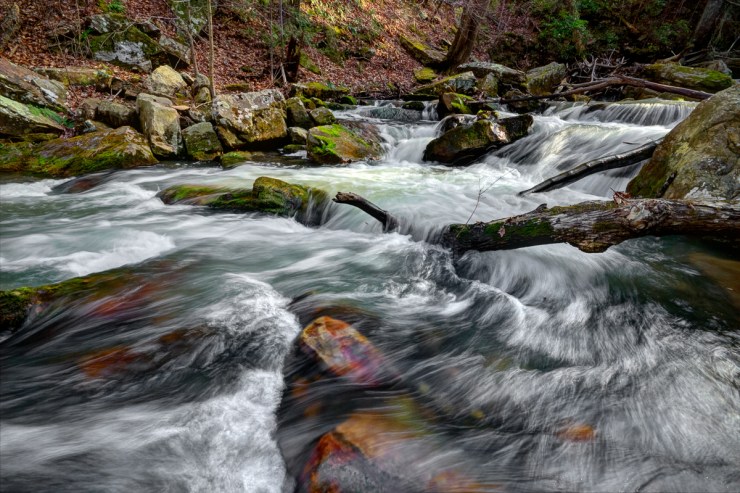
For this, I highly recommend the use of a reliable mid-to-lightweight tripod that you’re comfortable banging around and submerging, at least partially in water. If the water is fairly calm, try to get out as close to the middle as possible. In a stronger current, my preference is to locate an eddy (or calm spot) along the edge in shallower water to find a good position, or along the rocks, if need be.
Here a tripod with no center-post bracing will shine. Not too big a deal, but the flexibility to take a wide footprint at varying leg angles is key in terms of acquiring a low and steady shot.
I’ve been using the same, inexpensive Dolica tripod submerged in all levels of water for years now and the performance remains rock-solid. For those in need of a good lightweight tripod, I can recommend the 62″ aluminum model with confidence.
Any rock, grass and foliage detail around can serve well as an appealing foreground option. Where there is no dominant foreground object present, by using a wide lens and taking a lower angle, we always have the option of generating one from the broader elements of sky and water themselves.
.mgl-tiles { display: none; } #mgl-gallery-634eb4a96ad8b { margin: -5px; width: calc(100% + 10px); } #mgl-gallery-634eb4a96ad8b .mgl-box { padding: 5px; } @media screen and (max-width: 768px) { #mgl-gallery-634eb4a96ad8b { margin: -5px; width: calc(100% + 10px); } #mgl-gallery-634eb4a96ad8b .mgl-box { padding: 5px; } } @media screen and (max-width: 460px) { #mgl-gallery-634eb4a96ad8b { margin: -5px; width: calc(100% + 10px); } #mgl-gallery-634eb4a96ad8b .mgl-box { padding: 5px; } }
Midnight reflections via Sony A7R + Leica 18mm f/3.5 Super Elmar M
Sometimes color alone, or a certain play of light is all that is needed to adequately anchor a scene. In the above image, for example, having no active foreground or sky to work with, reflecting light became the primary focus and I ended up with a shot I didn’t initially see coming.
By combining these three simple steps of going wide, getting low and (when possible) placing ourselves in our scene, we will greatly increase the odds of coming back with a much more appealing and interesting result every time out.
Yes, you made that …
I hope you find these tips helpful and will give them a try in your own landscape projects. Learning to generate the feeling of being present, or dislodging that distant memory from others who may have been in times past is a rewarding goal, and one that I hope will resonate in my own work as I continue to learn and grow.
I suppose the desire to capture an appealing landscape will always be with me, even as if only a small token of my own appreciation of this life and the many lessons yet to be learned. Or, more importantly, to enrich the lives of others by spreading a little color and good cheer. Either way, it’s a win-win and is always a rewarding experience when the result is printed and displayed in all of its colorful glory, right where it belongs.
Thank you for stopping by, look forward to catching you next time. Questions or suggestions? Please leave them in the comments below or feel free to drop me a line any time.
If you’re looking for a great gear guide for landscape photographers, check this out.
Tell your story with the second annual Visual Storytelling Conference!
Experience four days of interactive, online training sessions featuring a range of educational content with experienced photographers and content creators. This free event kicks off with a series of technical boot camps to build essential skills, followed by live, online sessions on photography, video, business and social media. Join live from March 10-13, 2022!
